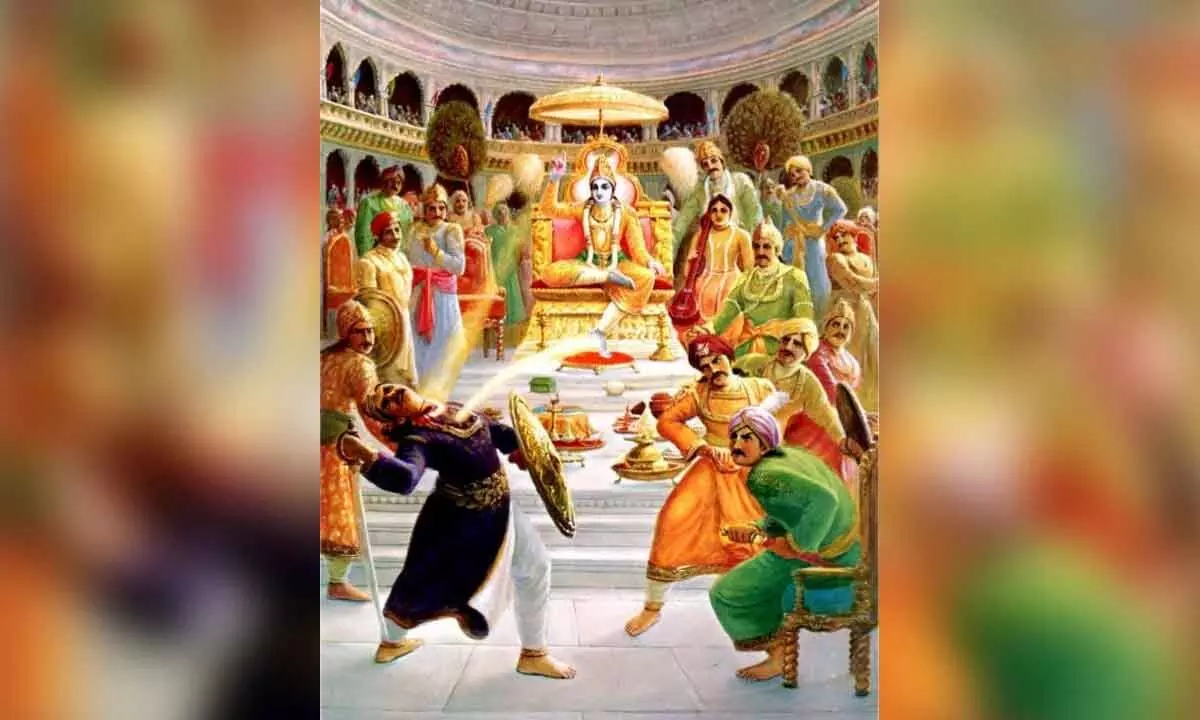Social Consciousness: Evil, Too, Is a Manifestation of God

It gives us comfort to assume that God is the centre of all virtues and power. But we see a good amount of evil in the world. If God is all virtue, where does evil come from? This question makes us assume another character, an antagonist to God, who is the mischief-maker guiding all evil persons
It gives us comfort to assume that God is the centre of all virtues and power. But we see a good amount of evil in the world. If God is all virtue, where does evil come from? This question makes us assume another character, an antagonist to God, who is the mischief-maker guiding all evil persons.
One disadvantage of this explanation is that God has an eternal rival. However powerful he may be, he is still troubled by the antagonist. Vedanta proposes a model which explains this problem of evil. In Srimad Bhagavatam, Dharmaraja gets doubt about how the soul of evil Sisupala merged in Krishna when Krishna killed him. Sage Narada explains how the three tendencies in human nature are from nowhere else than God. Krishna says in the Gita, ‘The three gunas come from me only’ (7-12).
An important philosophical school named Sankhya identified that there are three strands in nature – sattva, rajas and tamas – to which we referred in some earlier articles. Sattva is the virtuous nature, rajas is the achieving nature, and tamas is the dull or obstinate nature. Everything in creation is a combination of all these three strands. There is none who is absolutely good and none who is absolutely evil. A combination of these three strands in infinite proportions produces variety and diversity in creation.
What we call gods, demons, and humans are none other than people in whom the above three mix in different proportions. The predominance of sattva makes people lead happier lives. In stories, we call them gods or saints. An almost equal mix of all three elements makes humans, and the predominance of tamas makes evil-minded persons whom we call demons in stories.
We see people who are great achievers. Who are they? They have a predominance of rajas, which is guided by sattva. They are achievers or good leaders. The ideal kings of old were said to be of this nature. There can also be evil achievers like Ravana. They have a predominance of rajas, which is guided by tamas.
All this looks like speculation, but the three types of people are seen by us all around. Psychologists have given different names for the three defining qualities by avoiding ethical connotations such as good and evil. However, in religion, these become inevitable. Religion proposes punishment for the evil doers. Like in all religions, the place is called hell, but the boss of hell is not an antagonist to God, but an associate god, a manager of correctional administration. This God, named Yama, is shown almost as a clown in our cinemas, but he is the person who first revealed the knowledge of Brahman to humans, as Katha Upanishad tells. Etymologically, the name Yama means ‘one who restrains and one who instils discipline’.
It is as though God has created us with a combination of the above three tendencies giving us a chance to either go up to heaven or slip down into hell. In fact, Vedanta calls human life karma bhumi, the plane of action. The word bhumi does not refer to land; it relates to the maturity level of the seeker on the spiritual path. Karma bhumi does not mean Bharat Varsha, as it is sometimes described in mythological stories, but refers to human life, as against the life of animals or insects. It is here that a person can examine the human predicament. Here, he can use the opportunity to do good work and move up to heavenly states of existence or indulge in evil and move down to hellish planes.
(Writer is former DGP, Andhra Pradesh)













